Sphynx breed
Name the most unusual cat breed you know. Surely most of the respondents said that this is a sphinx. These cats have been leading the exotic rating for a long time, and they are not going to give up their positions. Hairless cats are popular all over the world, they have millions of fans, and millions of anti-fans - yes, not everyone loves and understands sphinxes. Contradictions are caused by their appearance, it is very unusual. If you are among the exotic lovers, you are attracted to the Sphynx cat breed, then this article will be useful for you. You will learn the history of the breed, interesting facts, get acquainted with the description of the nature of hairless cats, find information on care and maintenance.
History of the breed
At the mention of the Sphinx breed, Egypt immediately appears. But in fact, bald cats have no direct relation to this ancient country. There is only an assumption that cats without hair existed already in ancient times, as evidence, scientists cite rock paintings. As you know, in Egypt, cats were in the role of a deity, so it is not surprising that there are a lot of images of these animals there.
The most plausible pictures were found in Mexico, among the Aztecs - this people definitely knew and loved bald cats. In addition, I managed to see these ancient animals with my own eyes and capture them in the photo - they were Mexican hairless cats. Unfortunately, at the beginning of the 20th century, the breed disappeared, but before that it made a splash at American exhibitions. These cats were somewhat different from modern sphinxes in physique, and most importantly, in the cold season, their hair partially grew.
One of the progenitors of the modern Sphynx was born in Canada in 1966. An ordinary cat gave birth to a hairless kitten - this happens, since the absence of wool, in fact, is a genetic mutation. Then, in Canada, it happened spontaneously. The hostess left the unusual cat for herself, and when he grew up, she brought him to his mother in order to get bald offspring again. The experiment was a success, hairless kittens were born.
Around the same time, the same story happened somewhere, and so by the beginning of the 70s there were already two branches of hairless cats. Two is better than one, but still very, very few for selection. Due to the lack of “personnel”, the breeding of the breed went with great difficulties, the kittens were dying, the cats were sick - fresh blood was needed. A few more times, by chance, as a result of a spontaneous mutation, bald kittens appeared, and this saved the situation. Soon several animals were sent to Europe to develop a separate branch, where they began to cross with the Devon Rex breed, which is the closest in parameters.
The breed was recognized, moreover, today there are seven varieties of sphinxes in the world.
The skin of Sphynx cats is covered with folds and wrinkles. If you look closely, you can see a strong resemblance to human skin. It is also interesting that cats sweat all over their bodies. Sweat has a specific smell and leaves dark spots on the body of the animal.
The body of hairless cats is very hot. It's all about the absence of wool - the body directly gives off heat. Therefore, despite the warm body, sphinxes must be protected from the cold. They like to bask on a radiator or under a table lamp - it is necessary to create conditions for them in which the cat could always find a warm and cozy place for itself. Keep in mind that the sun can burn your pet! Control sunbathing, and accustom to tanning gradually.
The less hair and fluff on the kitten, the more bald the adult cat will be.
Sphynxes are very difficult to tolerate any disease, they quickly develop dehydration, they are rapidly losing strength. At the first sign of a serious illness, the animal is recommended to be taken to the veterinarian.
Sphynxes are devoid of hair, but in some places it is partially preserved or grows back with hormonal surges. There are hairs or fluff on the muzzle and head, paws, and on the tip of the tail.
1 of 7


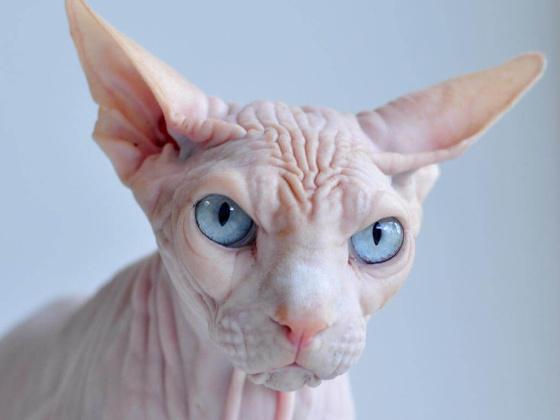

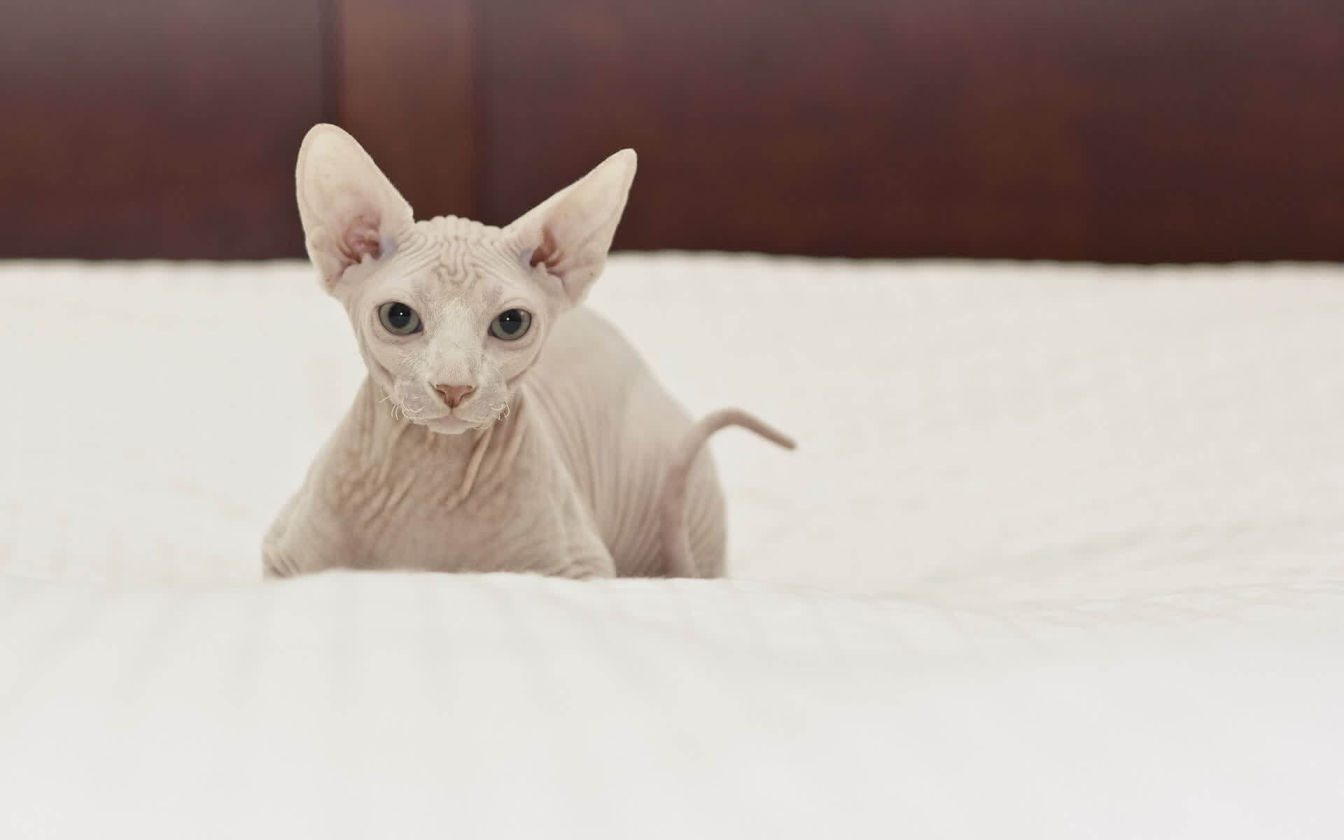
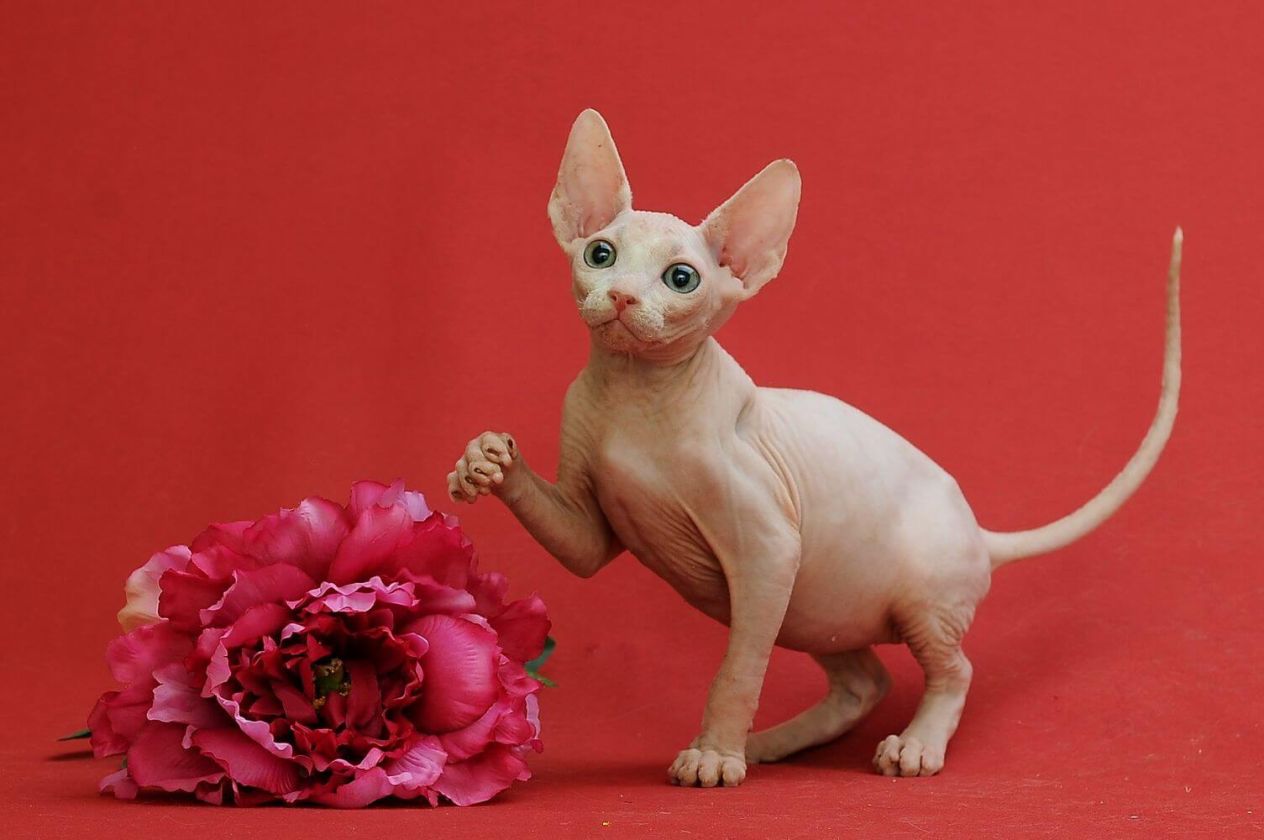
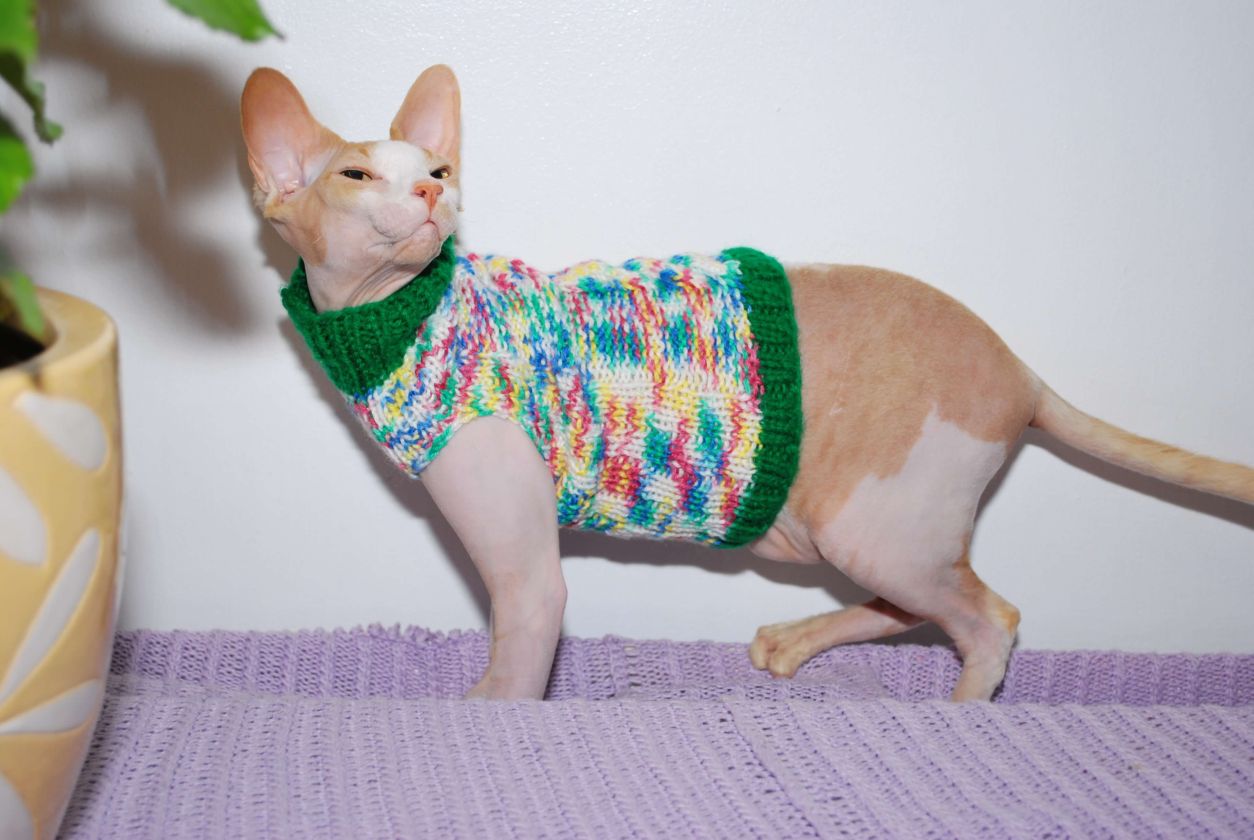
The character of the sphinx
Sphinxes have a versatile and rich character. These are smart, intelligent animals that show a complete understanding of the words and requests of the owner, easily remember simple commands, their name. Hairless cats prefer to lead an active lifestyle, they like to follow the owner, overcome obstacles, jump from one object to another. There is something doggy about them, they also like to play, bring objects, they are very attached to the owner, they miss him, they are looking for communication.
The breed is considered decorative, so the instinct of a hunter in cats is almost absent. They get along well with other animals and are not afraid of large dogs. They are kind and affectionate, but sometimes they can turn into a real fury, showing the enemy teeth and claws. Each individual has character traits; behavior is not always a trait of the breed.
The owners of sphinxes say that the animals seem to understand that they are completely dependent on a person and are grateful to him for his care. This breed of cats lacks not only wool, but also whiskers, the most important cat “device”. Find yourself on the street or in the wild, the sphinx will die almost immediately.
Sphinx breed varieties
Today there are seven varieties of the Sphynx breed. Three of them are called pioneers - the main branches of the breed, which arose as a result of spontaneous mutation, in a natural way. The rest are the product of selection, they were bred after.
As a result of spontaneous mutations appeared:
- Canadian Sphynx;
- Don Sphynx;
- Kohona (rubber, Hawaiian hairless)
As a result of breeding programs, the following were bred:
- Peterbald, was obtained by crossing the Don Sphynx and Oriental cat.
- Minskin, the Canadian Sphynx, Munchkin, Devon Rex and Burmese were used for breeding.
- Bambinle is a Canadian Sphynx and Munchkin.
- The Ukrainian Levkoy was obtained by crossing the Don Sphynx, Peterbald, Oriental, Scottish Fold, Persian, Domestic.
Sphynx Care
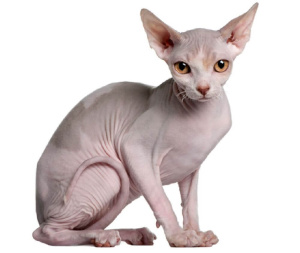 Sphynx sweat all over the body, sweat appears on the skin and remains in the form of a dark coating. If the cat gets dirty very quickly, then it may be necessary to reconsider her diet. The skin is cleaned with a damp soft sponge. The cat can be bathed, but not more than twice a month. It is recommended to use a shampoo with low acidity. After bathing, the cat is thoroughly dried and taken to a warm, dry place.
Sphynx sweat all over the body, sweat appears on the skin and remains in the form of a dark coating. If the cat gets dirty very quickly, then it may be necessary to reconsider her diet. The skin is cleaned with a damp soft sponge. The cat can be bathed, but not more than twice a month. It is recommended to use a shampoo with low acidity. After bathing, the cat is thoroughly dried and taken to a warm, dry place.
Sphinxes must be protected from cold and drafts. The optimum temperature for keeping is considered to be 20-25 degrees, with lower thermometer readings, the cat must be insulated by putting on a suit.
The dark secret accumulates inside the ears, it is periodically cleaned with a cotton swab.
The cat's claws are regularly cut, the very tip, since in the conditions of an apartment it is impossible to sharpen them qualitatively. Long claws can injure the delicate skin of the animal.
Adult sphinxes rarely get sick, kittens are vaccinated, preferably with live vaccines. Lactating cats often have too much milk and this leads to the development of mastitis.
Kittens stay with their mother for a long time, they need to grow up and get stronger. Early selected kittens may die.


